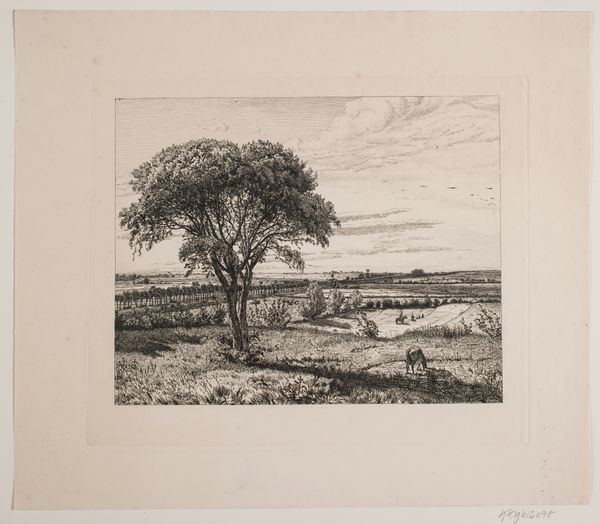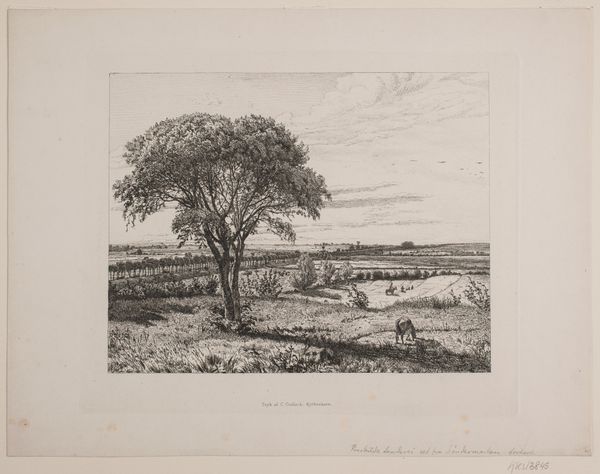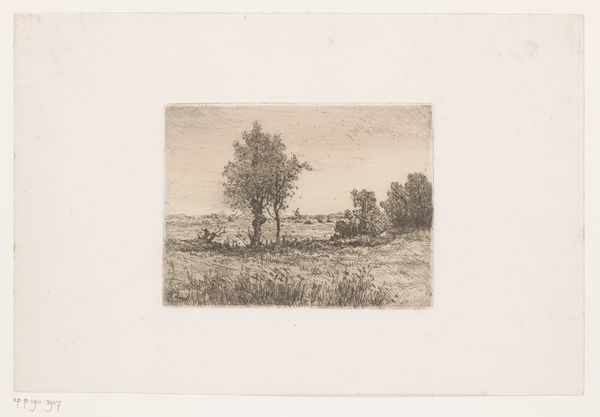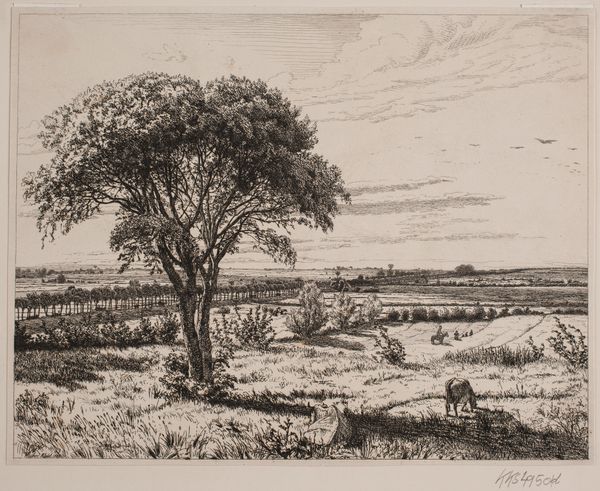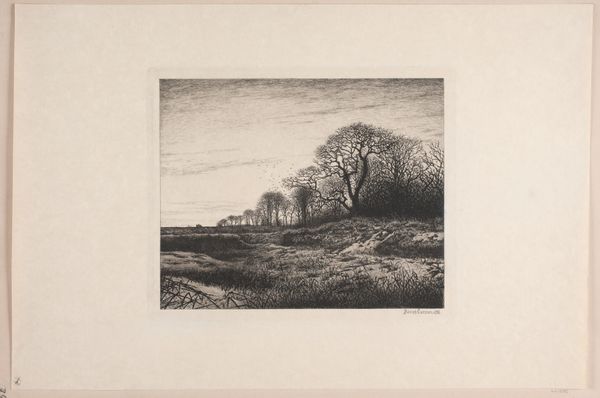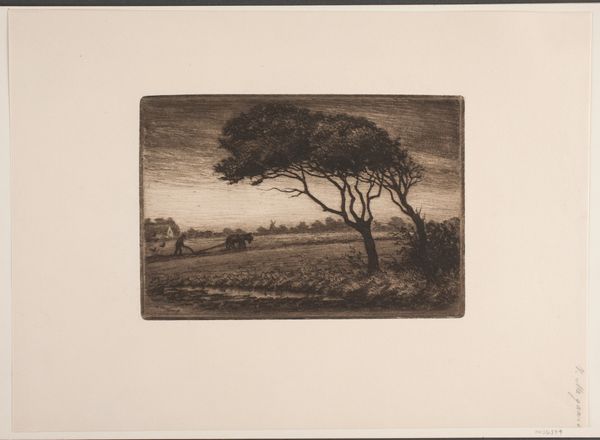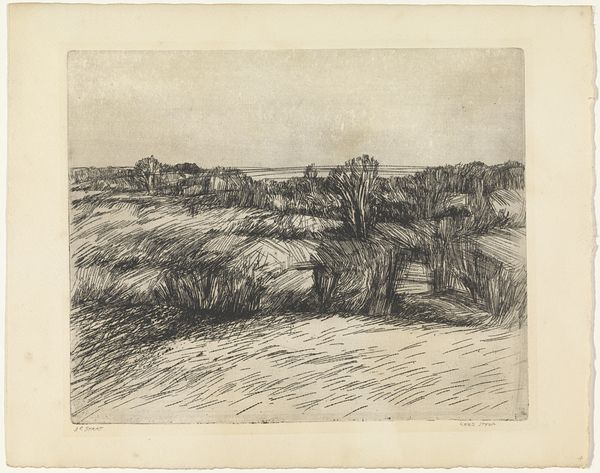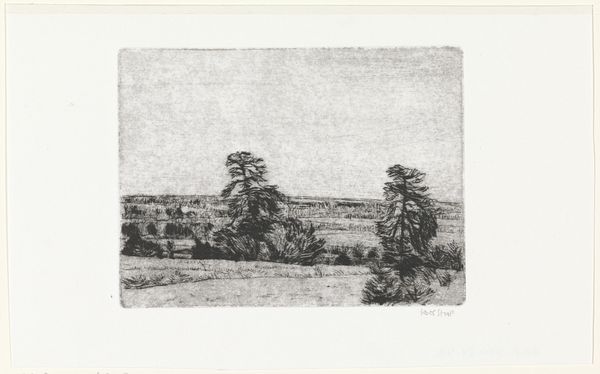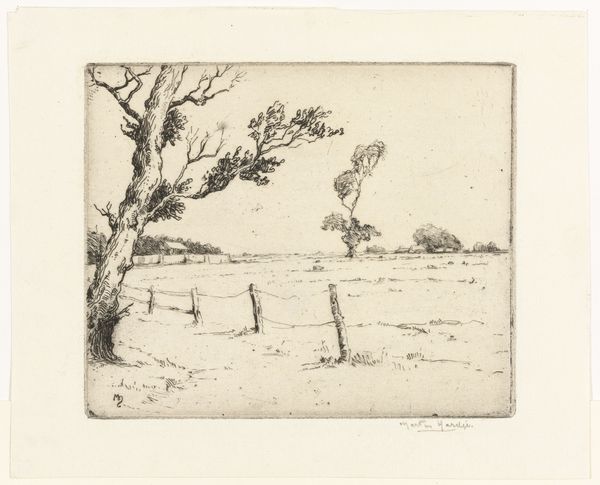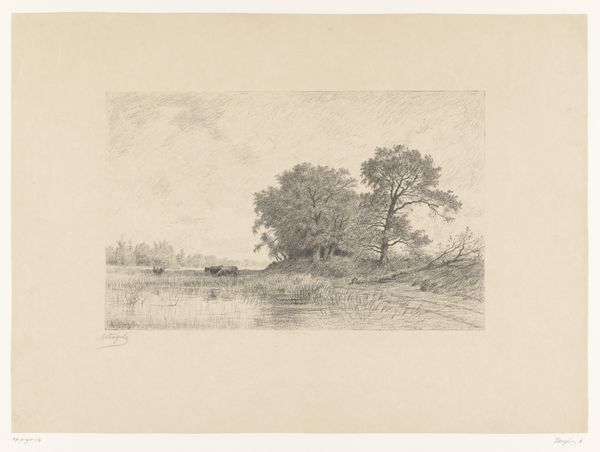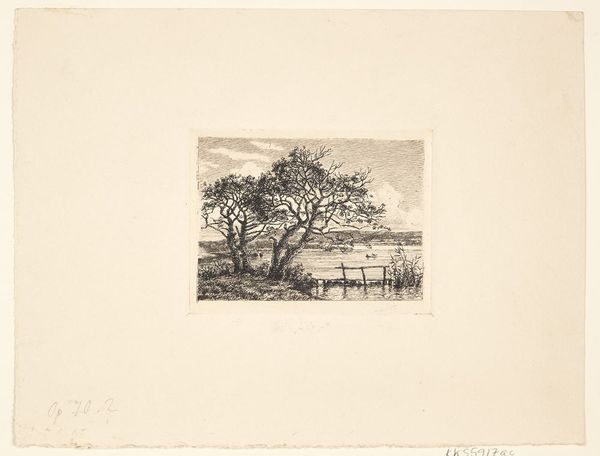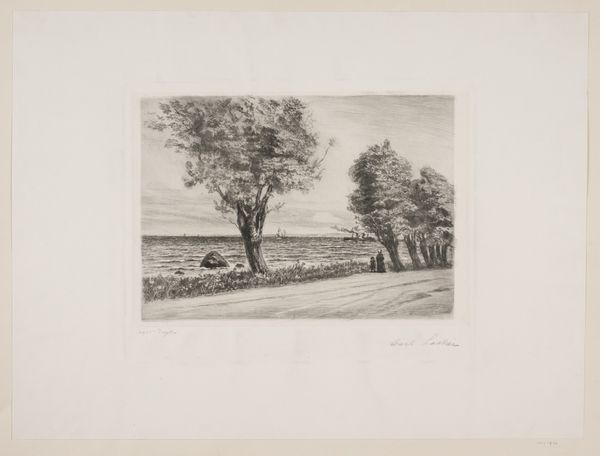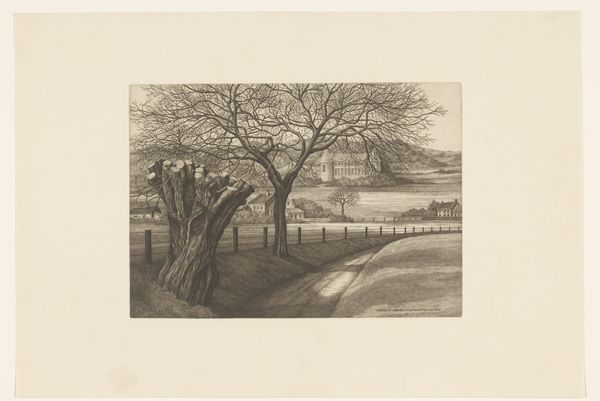
print, etching
# print
#
etching
#
landscape
#
northern-renaissance
#
academic-art
#
realism
Dimensions: 220 mm (height) x 267 mm (width) (plademaal)
Curator: Vilhelm Kyhn’s “Landscape near Roskilde Road,” etched in 1849, captures a quiet pastoral scene. My first thought? A muted elegance; the delicate etching lends a stillness to the vast landscape. Editor: Indeed. I'm struck by the seemingly endless Danish countryside and wonder about its role during the budding nationalist movements. Kyhn positions a single, mature tree prominently—was this a conscious invocation of nature as national symbol? The quiet ox, the unseen workers in the distant field—are these intended as reflections of the labor shaping the Danish nation? Curator: Thinking of Kyhn’s technique, notice the print medium—etching—how the dense network of lines simulates light filtering through the leaves of the tree and across the uneven terrain. The varying line weights create a compelling sense of depth and texture. It’s a relatively accessible and reproducible medium as well, so what implications might this have on distribution and reception during the mid-19th century? Editor: An excellent point about accessibility, particularly when considered within the context of the growing urban centers in Europe and the parallel rise of nationalist sentiments. And who had access? Which homes might display it, and who would gaze upon it, idealizing this vision of laboring, agrarian Denmark? I think particularly about the labor required to pull impressions for such a composition. Curator: He masterfully utilizes a range of tools to create the marks—various etching needles, perhaps different acid concentrations for different line depths. Also, think of the labor involved in preparing the copper plate, applying the etching ground, and carefully controlling the biting process. The final print reflects a series of skilled physical actions. Editor: And considering those skilled physical actions in 1849, one wonders what this etching and image tells us about Danish society. Was it intentionally sentimentalized? To what end? It’s essential we remain aware of the narratives an ostensibly simple landscape either reinforces or obscures. Who is not pictured, or underrepresented, and what historical factors led to that absence? Curator: Considering the materiality of the artwork offers a different perspective; that it's a paper artifact bearing an image, which resulted from a matrix, altered by chemicals, and transferred by a printing press. Thinking of how the materials and method speak just as loudly. Editor: I agree, viewing them in tandem opens new layers. Thank you for shedding light on production and its tangible essence. It enriches the viewing experience so we may recognize how it speaks to the wider political moment in Denmark, as well as today.
Comments
No comments
Be the first to comment and join the conversation on the ultimate creative platform.
